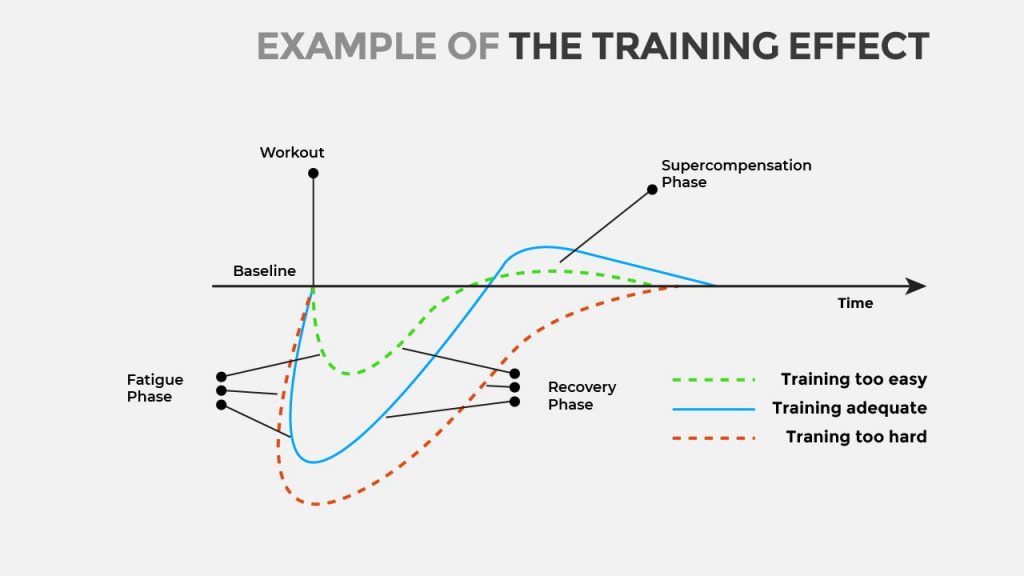
Rest Days for Runners: How to Do It Right

Remember the proverb that we learned as children, “all work and no play makes Jack a dull boy”? As it turns out, this holds true for running and other sports as well. As tempting as it is to run every day, your rest days are as important as your training days. Although this might sound counterintuitive, having dedicated rest days for runners in the training schedule will help in recovery and performance. Let’s find out how.
There’s a limit to how much physical training stress the human body can adapt to. Each athlete is unique in their tolerance of high training stress, and it’s deeply influenced by the time they devote to rest and recovery. Therefore, rest days for runners are vital.
Why do we need rest days?
In his position paper on overtraining, author-researcher Dr Phil Maffetone models successful training on a simple equation:
Training = Workout+Recovery
When the duration and/ or intensity of exercise is high, recovery too has to be adequate to ensure the body adapts to the stress. In case of inadequate recovery, there will be training decrements (or reduction) and overtraining (see graph below).

On the other hand, a well-timed accumulation of training load followed by a strategic period of rest will lead to super-compensation, which can lead to a marked increase in performance (see figure below).

The road to recovery lies through rest days. A rest day between workouts allows your body to repair itself and is critical in making progress in terms of training. If there is inadequate rest, it can result in overtraining.
Overtraining leads to physiological, psychological, and biochemical changes that are often described as burnout, staleness, stagnation, and chronic fatigue
Signs that you need a rest day
1. Lingering fatigue despite adequate sleep
You feel exhausted even though you’ve been sleeping for eight hours or more. It means that your muscles are tired and need a break from the physical load being placed on them. You need a day or two of complete rest.
2. Muscle soreness lasts two to three days
Delayed Onset Muscle Soreness (DOMS) is a normal phenomenon when muscles undergo micro-trauma during training. They are repaired when allowed adequate rest. However, if you find such soreness lasting for two or more days each time, and it’s a frequent occurrence, it is a sign that the repair process is incomplete. You’d need to refrain from loading those muscles again.
3. You are unable to hit the paces
If your regular easy pace in training feels hard, or your heart rate seems to be unusually high, it is time to take a break from training. One sure sign that you need to drop a workout is when instead of feeling energized, you feel tired after a warm-up. Please note that you need to have the right device to find the heart rate while training, as your wrist heart-rate monitor may not be the most accurate.
4. You are irritable and anxious all the time
One of the psychological signs of burnout is that you just can’t relax and get ticked off at the least provocation. This happens because your body feels drained from too many workouts and seeks rest from physical stress.
Also read: How Often Should You Run As A Beginner?
How many rest days should you aim for?
You may wonder when to take a rest day from working out. Well, a rest day can mean different things and need not necessarily involve putting your legs up and sleeping all day. You may be curious to know how many rest days per week is ideal. This depends on your running proficiency and experience. A rest day for beginner runners can be incorporated every alternate day. Runners with some training experience should take one every three to five days, while once a week is ideal for advanced runners. Emotional or work stress can also affect how your body adapts to training load.
To utilize your rest day effectively, consider some “active” rest, where you indulge in activities that are gentle and enjoyable. Some examples are:
- Walking
- Gentle swimming
- Light yoga
- Meditation and focused breathing
- Easy cycling
All athletes, whether recreational or competitive, need to incorporate rest days in their workout routine. There are many reasons why rest days are important for runners. Such breaks are necessary to prevent injury, fatigue, and soreness. Rest days also help boost adaptation to workouts and improve performance. When it comes to the human body, balance is key.
Reference
1. Maffetone P. The overtraining syndrome. MAF. 2019; published online Apr 29. https://philmaffetone.com/the-overtraining-syndrome/ (accessed Feb 19, 2021)














